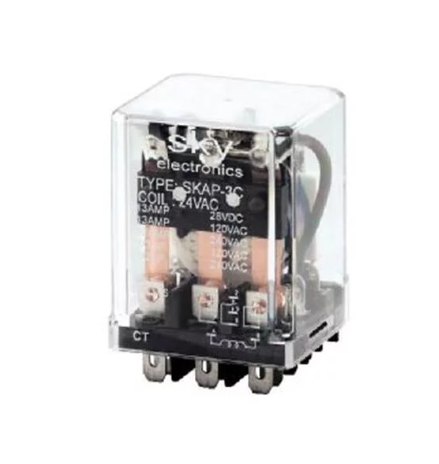Relays are fundamental components in electrical systems, serving as crucial switches that control the flow of current. Understanding the principle behind relays is essential for engineers, technicians, and enthusiasts alike. In this article, we will delve into the intricate workings of relays, exploring their mechanism, applications, and benefits.
- The Basics of Relays:
Relays are electromagnetic switches that utilize an electromagnet to control the opening and closing of circuits. They consist of several key components, including the coil, armature, contacts, and spring. When an electric current passes through the coil, it generates a magnetic field, attracting the armature and causing the contacts to close or open, depending on the relay type. - The Principle of Electromagnetism:
At the heart of relay operation lies the principle of electromagnetism. According to this principle, an electric current flowing through a conductor produces a magnetic field around it. By coiling the conductor, such as copper wire, the magnetic field is intensified, creating a stronger force to act upon the armature. - Types of Relays:
Relays come in various types, each designed for specific applications. Some common types include electromagnetic relays, solid-state relays, thermal relays, and reed relays. Each type has its unique advantages and is utilized in different industries, such as automotive, telecommunications, and industrial automation. - Applications and Benefits:
Relays find extensive use in numerous applications, ranging from simple household appliances to complex industrial machinery. They provide several benefits, including electrical isolation, signal amplification, and circuit protection. Relays also enable the control of high-power devices using low-power signals, enhancing safety and efficiency in electrical systems. - Advancements and Future Trends:
With the rapid advancements in technology, relays have also evolved to meet the demands of modern systems. Miniature relays, solid-state relays, and programmable relays are just a few examples of the innovations in this field. The integration of relays with digital control systems and the Internet of Things (IoT) opens up new possibilities for automation and remote control applications.
Conclusion:
Relays play a vital role in controlling electrical circuits, providing a reliable and efficient means of switching current. By understanding the principle of relays, we gain insight into their inner workings and can harness their potential in various industries. From their basic components to advanced applications, relays continue to shape the world of electrical engineering, enabling innovation and progress.

